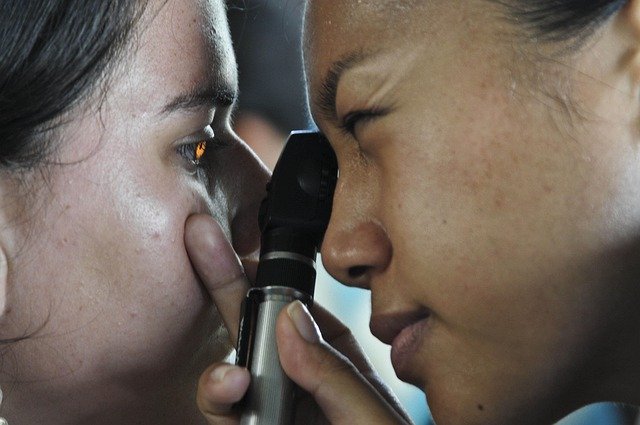When Visual Disturbance Indicates a Neurological or Vascular Issue
Blurred or fluctuating vision can result from routine refractive changes or from more serious neurological or vascular problems. This article explains key features that suggest a neurovascular cause, how eye care professionals approach diagnostics, and typical pathways for clinical assessment and ongoing rehabilitation or visual support.

Blurred, double, or patchy vision is often caused by refractive errors or ocular surface conditions, but sudden or unusual visual disturbance can signal neurological or vascular disease. Rapid onset, visual field loss, transient monocular blindness, or vision changes accompanied by headache, weakness, or speech difficulty should prompt urgent evaluation. Early recognition helps direct appropriate diagnostics and care coordination between optometry, ophthalmology, neurology, and vascular medicine to reduce the risk of lasting impairment.
This article is for informational purposes only and should not be considered medical advice. Please consult a qualified healthcare professional for personalized guidance and treatment.
Optometry and ophthalmology: who evaluates vision?
Optometry typically manages routine eye care including refraction, eyewear prescriptions, and screening for conditions such as myopia, hyperopia, and astigmatism. Ophthalmology provides medical and surgical management for eye disease including cataract and glaucoma, and evaluates acute visual loss. When visual disturbance is sudden or accompanied by neurologic symptoms, optometrists often refer patients to ophthalmology or emergency services so specialized diagnostics and systemic evaluation can be pursued promptly.
What diagnostics identify neurovascular causes?
Diagnostics blend ophthalmic imaging and neurologic testing. Ophthalmologists may use fundoscopy, optical coherence tomography (OCT), visual field testing, and fluorescein angiography to inspect the retina and optic nerve. Neurologic workup can include brain and orbital MRI, CT, vascular imaging such as CT angiography or carotid duplex, and blood tests for inflammatory or thrombotic conditions. Telemedicine can support initial triage, but in-person imaging and specialized assessments are commonly required to confirm neurovascular pathology.
How do refractive issues differ from neurologic ones?
Refractive causes produce relatively stable blurring correctable with eyewear or refractive procedures. Symptoms from myopia, hyperopia, or astigmatism typically develop gradually and improve with lenses or corrective interventions. Neurologic or vascular visual disturbances are often sudden, may affect part of the visual field, produce transient monocular vision loss, or be accompanied by double vision and other neurologic deficits. Careful refractive assessment helps rule out correctable vision issues before pursuing advanced neurovascular diagnostics.
When do cataract or glaucoma mimic neurologic signs?
Cataract and glaucoma can degrade vision and contrast sensitivity, sometimes making tasks difficult and giving the impression of generalized visual decline. However, these conditions usually progress slowly and rarely cause sudden field loss. Rapid peripheral field constriction, acute pain, or painful eye movement suggests other causes. Distinguishing chronic ocular disease from acute neurologic events is essential; targeted ocular testing and neurologic imaging clarify whether symptoms stem from intraocular disease or neurovascular events affecting visual pathways.
Can dry eye or eyewear affect neurological assessment?
Dry eye may cause fluctuating vision, irritation, and difficulty with sustained focus, which can complicate initial assessment. Incorrect eyewear or an outdated refraction similarly produces blurred vision that improves with proper correction. Clinicians should address surface disease and ensure accurate refraction before concluding a neurovascular diagnosis. When visual disturbance persists after treating dry eye and updating eyewear, further diagnostics for optic neuropathy, retinal vascular occlusion, or central nervous system causes are warranted.
What roles do laser surgery, telemedicine, rehabilitation play?
Laser surgery is an effective option for selected refractive errors after thorough evaluation, but it is not appropriate for neurovascular causes of vision loss. Telemedicine can expedite triage, follow-up, and coordination between optometry and ophthalmology, especially for remote patients, though in-person imaging and specialist exams remain key. Rehabilitation services and low-vision specialists support functional adaptation when deficits persist, offering strategies, adaptive eyewear, and assistive devices to improve daily function and quality of life.
Conclusion Visual disturbance spans benign refractive issues to serious neurological or vascular conditions. Features such as sudden onset, focal field loss, transient monocular blindness, or accompanying neurologic symptoms raise concern for neurovascular causes and require expedited evaluation. Coordinated care across optometry, ophthalmology, neurology, and rehabilitation helps ensure accurate diagnosis, timely treatment, and support for vision recovery or adaptation.






